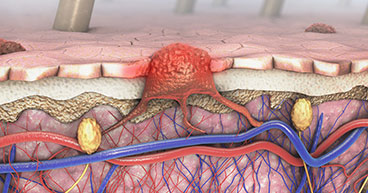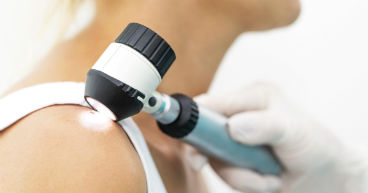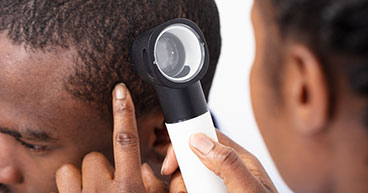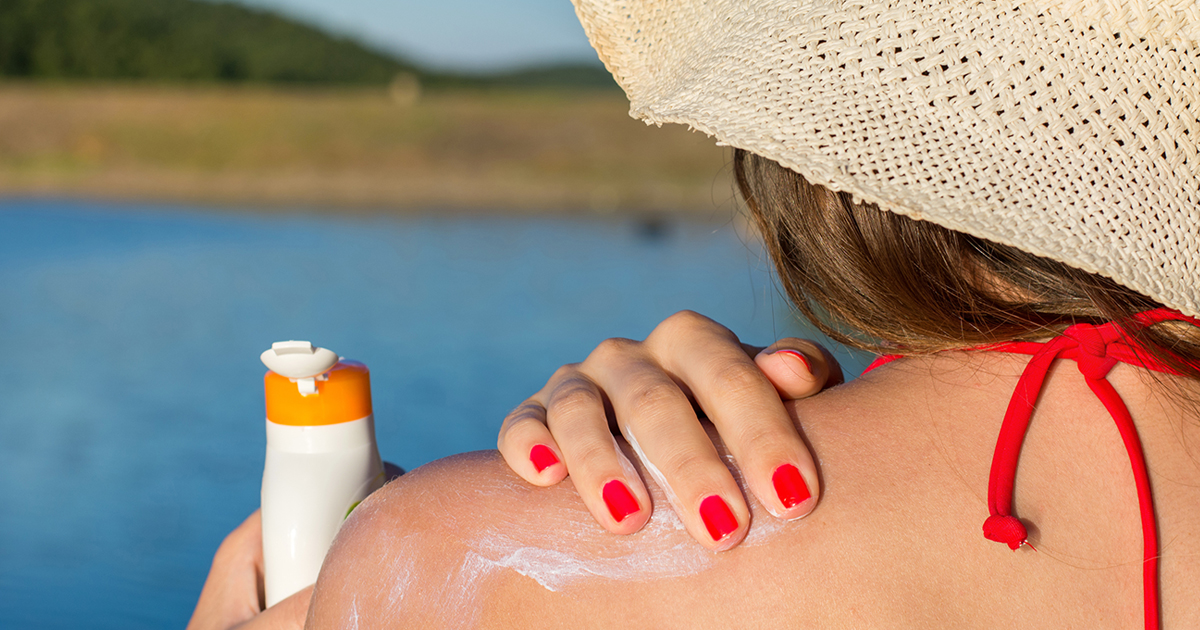
With summer comes barbecues, baseball, golfing, swimming, biking and lots more outdoor activities that expose your skin to the sun. Some people purposely lounge by a pool or at the beach to get the “healthy” glow of tan skin.
But can you get a suntan safely without exposing your skin to the damage that may lead to skin cancer? The short answer: No.
"If you’re exposed to the sun, there’s potential for damage,” says Stephen Lynch, MD, Vice Chief of Staff at City of Hope Phoenix.
But you can take certain steps to prevent burns and protect your skin from excessive damage, he says.
In this article, we’ll explore:
- What causes tan skin?
- Will a base tan protect your skin?
- Are tanning beds worse than the sun?
- How to tan safely
- Is sunscreen safe to use?
- How to protect your skin from the sun
If you’ve been diagnosed with cancer and would like to learn more about our treatment options, or if you’re interested in a second opinion on your diagnosis and treatment plan, call us or chat online with a member of our team.
What causes tan skin?
Skin tans when cells just below the surface, called melanocytes, are exposed to ultraviolet (UV) light and produce melanin, a pigment that darkens the skin. Melanin absorbs UV light and helps protect the skin from burning.
But too much UV light may do serious damage. It penetrates the skin deeply and may cause:
- Premature aging, including dark spots, wrinkles and a “leathered” look to skin
- Eye damage that may impair vision in both the short and long term
- Harm to skin cells’ DNA that may lead to basal cell carcinomas or squamous cell carcinomas, the two most common types of skin cancer
- Damage to melanocytes in the skin, which may develop into melanoma, the deadliest type of cancer (Melanoma accounts for only 1 percent of all skin cancers, but about 75 percent of skin cancer deaths.)
Ultraviolet rays are difficult to avoid. They bounce off water, snow and sand and penetrate windows, windshields and some types of clothing. Children, young adults and people with fair skin are at greater risk of cell damage from UV light.
"In general, the lighter your skin, the more likely you are to burn,” Dr. Lynch says. “Melanin, which causes darker skin tones, has a protective effect. Having darker skin, however, has been shown to lead to delayed diagnoses in some types of skin cancer. So, everyone needs to reduce skin damage from the sun."
Will a base tan protect your skin?
Contrary to popular belief, getting a tan will not protect your skin from sunburn or further skin damage. The extra melanin in tanned skin provides a sun protection factor (SPF) of about 2 to 4, which is far below the minimum SPF of 30 recommended by the American Academy of Dermatology (AAD).
While it’s true people with darker skin don’t burn as easily as those with light-colored skin, extended sun exposure still leads to skin damage and skin cancer. In fact, African Americans are 1.5 times more likely to die from melanoma than Caucasians, according to a study published in the journal, Medicine.
One reason for the disparity appears to be that skin cancer in people with darker skin is more likely to be diagnosed at a more advanced stage, when the disease is more difficult to treat. In a study published in the Archives of Dermatology that analyzed 1,690 melanoma cases, researchers found that 26 percent of cancers diagnosed in Hispanics and 52 percent of those in African Americans were advanced, compared to 16 percent of Caucasians.
The AAD recommends that everyone, no matter his or her skin tone, wear sunscreen because anyone can get skin cancer, regardless of age, gender or race.
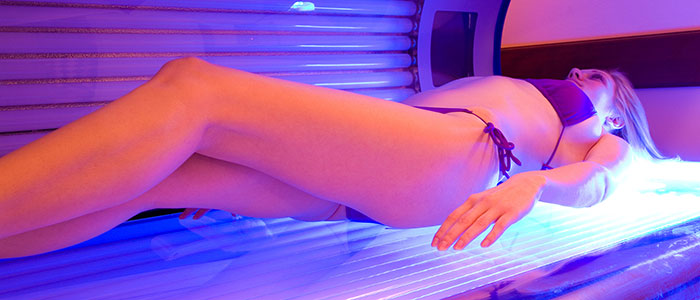
Are tanning beds worse than the sun?
Tanning beds or tanning booths emit UVA and UVB rays—just like the sun—and at rates of 10 to 15 times greater than the sun at its peak intensity. That means skin is damaged at a faster rate, and the risk increases with each use. That makes tanning beds riskier than the sun when it comes to tanning.
The World Health Organization classifies tanning beds as “carcinogenic to humans,” the same classification used for cigarettes. Additionally, many states prohibit the use of tanning beds by minors and young adults.
Scientific evidence strongly supports the finding that indoor tanning dramatically increases the risk of skin cancer. According to the AAD, indoor tanning may increase the risk of developing squamous cell carcinoma by 58 percent and basal cell carcinoma by 24 percent. Using a tanning bed just once before age 35 is believed to increase the risk of melanoma by 75 percent, according to the Skin Cancer Foundation.
Tanning beds may also cause long-lasting damage to the eyes, including by causing cataracts and eye cancers.
How to tan safely
The only way to tan safely is by using self-tanning sprays or lotions. Fortunately, self-tanners have come a long way since the days when they left skin streaky and the color of orange cheese-puffs.
Self-tanning products are safe and generally don't cause irritation to the skin. The most common main ingredient is dihydroxyacetone (DHA), which reacts with skin cells of the epidermis (outer layer) to create a darker color. Since skin cells shed over the course of a few days, the color fades gradually.
Beware of so-called “tanning pills.” Supplements that promise safe tanning may include large doses of color additives, such as canthaxanthin, which may be harmful to your health.
“In their quest for the perfect tan, some people may look for a ‘magic pill’ that will help them achieve this with minimal exposure to ultraviolet (UV) radiation,” the U.S. Food and Drug Administration (FDA) says in a statement. “There are no such pills approved for this purpose. Nevertheless, pills bearing tanning claims continue to appear on the market. Consumers should be aware of risks associated with such products, as well as doubts about their efficacy.”
Is sunscreen safe to use?
Sunscreen has been in the news lately, so you may wonder whether it’s still safe to use.
Sunscreen is considered an over-the-counter (OTC) drug and has been regulated by the FDA since the 1970s. A small FDA study published in JAMA in 2020 found that our bodies may absorb unusually high levels of certain active ingredients common in sunscreens. It's not certain these ingredients are cause for concern, but the FDA is taking a closer look at them.
Additionally, the 2020 Coronavirus Aid, Relief, and Economic Security (CARES) Act changed how the FDA regulates certain OTC products, including sunscreen. Changes to sunscreen labels, dosage recommendations and new regulations on active ingredients are in the works.
Still, the FDA advises: "Given the recognized public health benefits of sunscreen use, Americans should continue to use sunscreen and other sun protective measures."
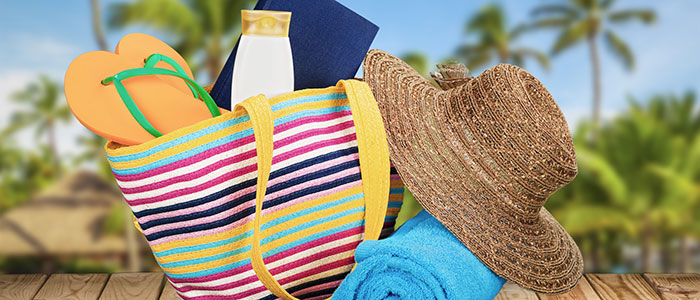
How to protect your skin from the sun
Remember, it’s never too late to start protecting your skin from the sun. As soon as you do, your body starts to repair some of the damage caused by its UV rays.
Here are some tips that may help you enjoy a safe and active summer:
- Use sunscreen with an SPF of 30 or higher if you plan to be outside longer than 20 minutes. Sunscreen should be water resistant and protect against UVA and UVB rays. Reapply regularly (about every two hours) and again after sweating or getting out of the water.
- Protect yourself from sun damage between 10 a.m. and 4 p.m., when the sun is the strongest. Stay inside or seek shade when you can.
- Cover up with a wide-brimmed hat, UV-blocking sunglasses and long sleeves and pants. For more protection, choose clothing with an ultraviolet protection factor (UPF) number on the label.
- Don't burn. Sunburns have been linked to an increased risk of melanoma.
- Avoid tanning booths and beds—all use damaging ultraviolet light.
- Examine your skin for suspicious spots every month and see a dermatologist for a full-body skin check once a year.
Even though tans aren’t safe, that shouldn’t stop you from enjoying the outdoors this summer. Outdoor activities are fun ways to get exercise, which helps reduce the risk of cancer and other illnesses.
“There’s lots to do outdoors—just try to be safe about the way you enjoy it,” Dr. Lynch says. “Don’t be fooled by cloudy or cooler days. You can still get burned. Also, be careful of times when you may be in the shade, but UV rays are being reflected toward you.”
If you’ve been diagnosed with cancer and would like to learn more about our treatment options, or if you’re interested in a second opinion on your diagnosis and treatment plan, call us or chat online with a member of our team.

